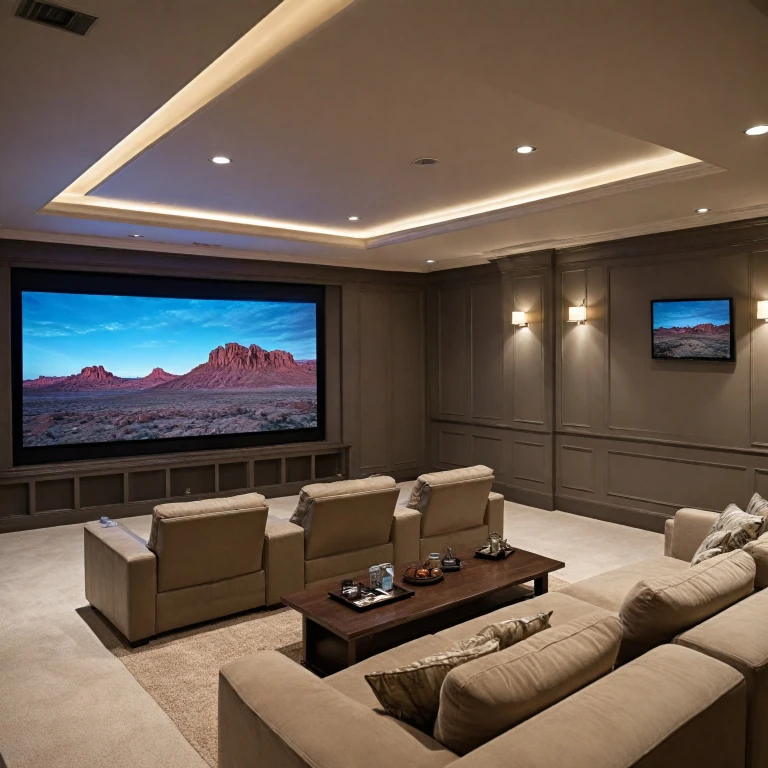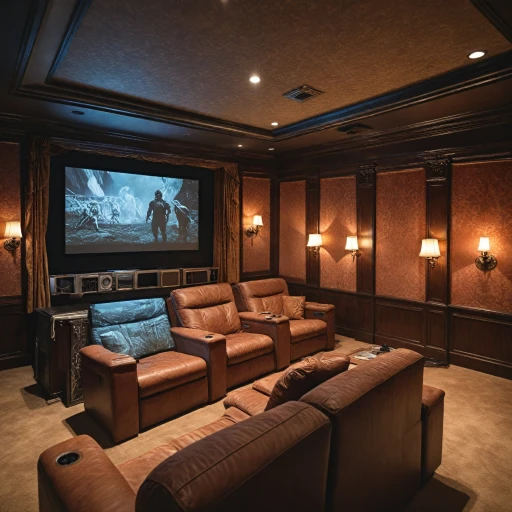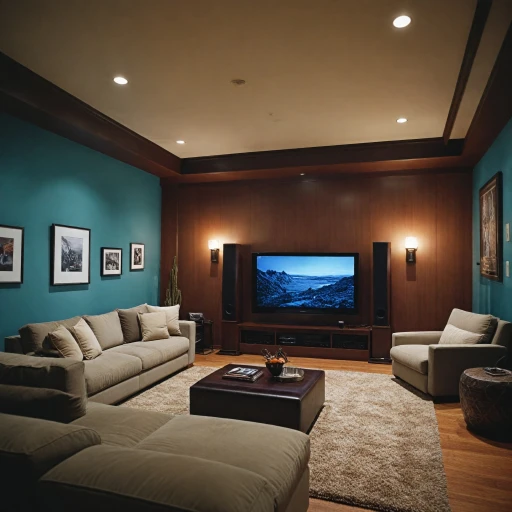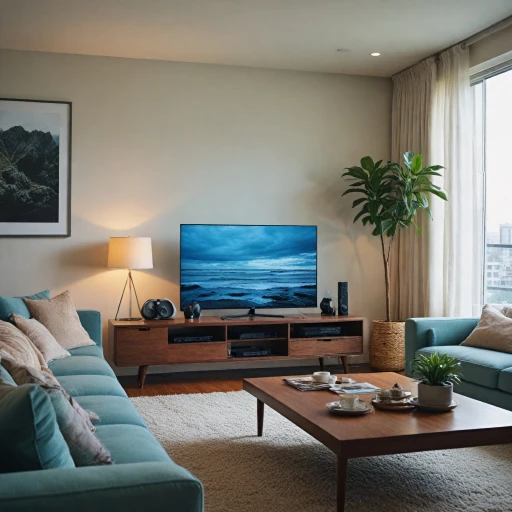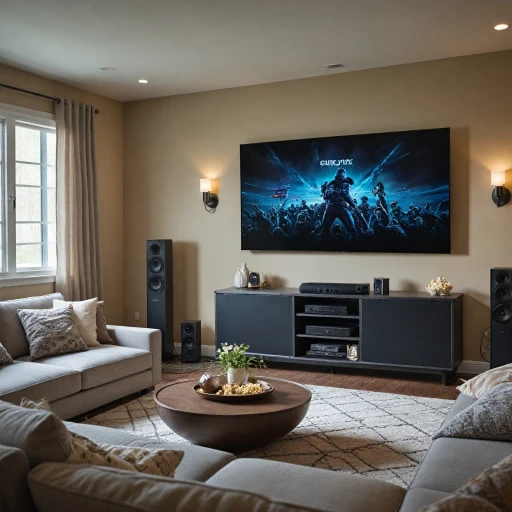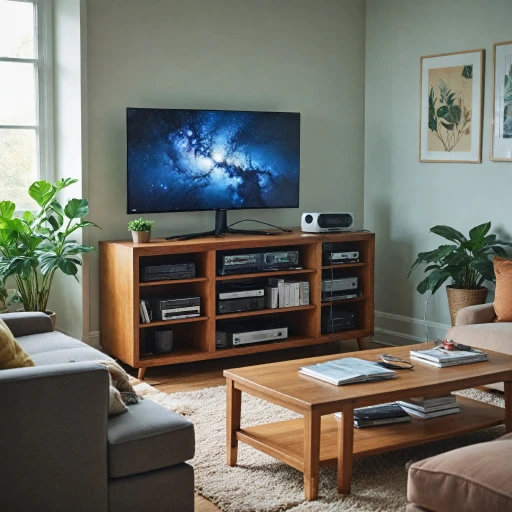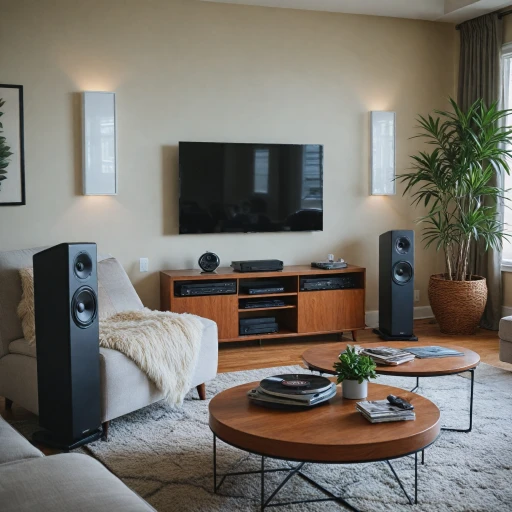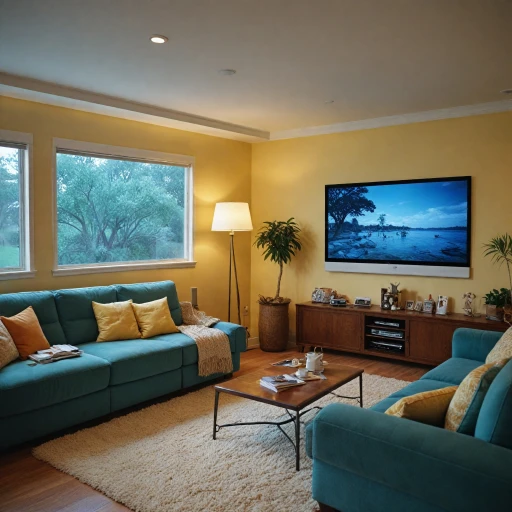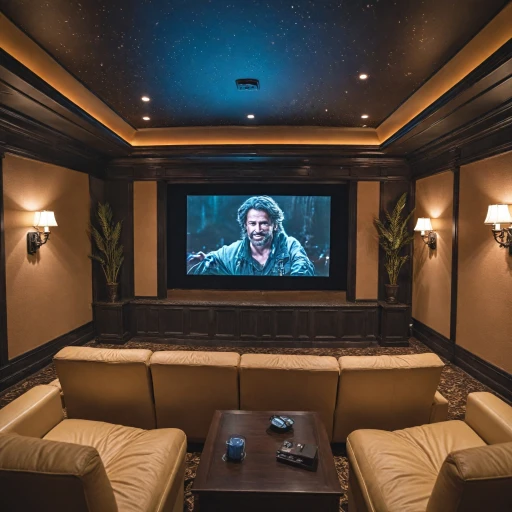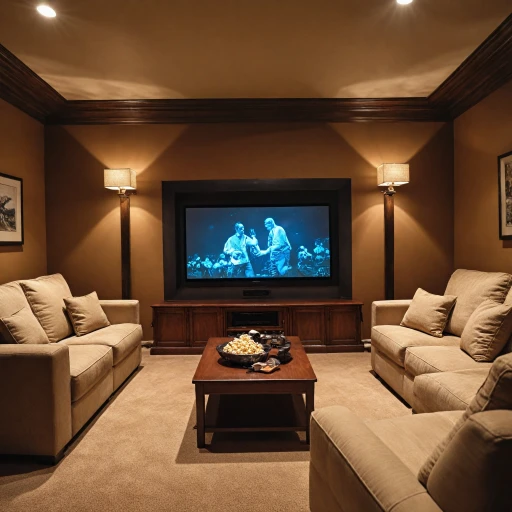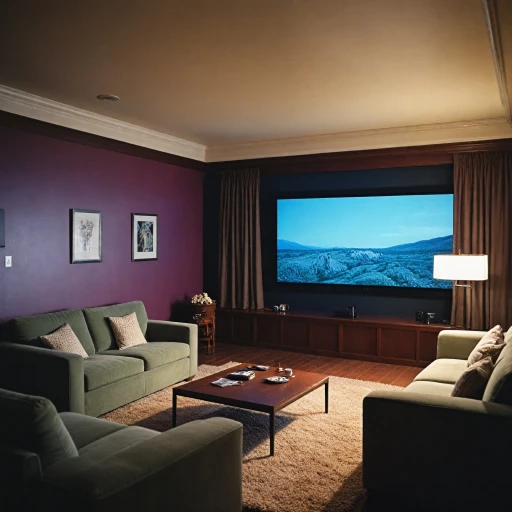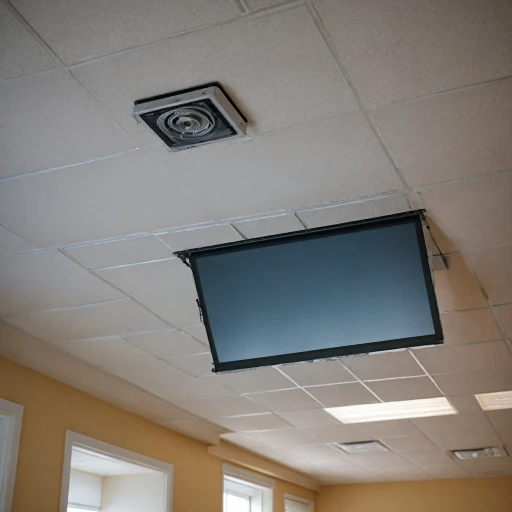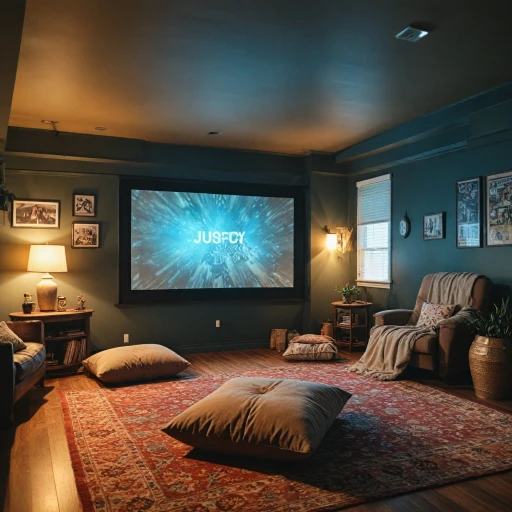
Understanding Projector Screen Mounts
Grasping the Basics of Screen Mounting
When it comes to creating a home theater, the choice of projector screen mount is crucial. Not merely an accessory, the mount defines how your screen hangs and how effectively it displays your projector's image. Generally, there are several types of mounts: wall mounts, ceiling mounts, or adjustable mounts that allow for customized installations. Wall mounts are a popular choice for those wishing to position their screens at eye level. They are particularly effective for short-throw projectors, which require less distance between the projector and screen. On the other side, ceiling mounts can hold your screen higher, often providing flexibility in projector placement, especially if you use a ceiling projector setup. However, it's worth investigating beyond basic functionality when selecting a mount. Consider how the mount complements different screen types such as electric motorized, manual pull-down, or fixed-frame screens. Additionally, some mounts cater specifically to outdoor setups and can handle the demands of changing weather conditions. Make sure the mount's color, usually in color white or black, blends well with your screen and decor. The purpose here is harmony without compromising on the viewing experience. To optimally enhance how your projector screen performs, think about mounts that come with features like adjustable extension and tilt capabilities. Such features facilitate better alignment and viewing angles, adapting to wherever family or guests are seated. Shopping for a projector screen mount involves sifting through different options in various stores, scrutinizing each product's specs and price. An important consideration is the reputation of the manufacturer. Brands like Elite Screens are known for their quality products. However, always match the mount's specifications to your projector's throw distance, screen size, and ambient light conditions. For those keen on understanding how a projector screen mount can play a significant role in their home theater setup, consult more detailed guidance on enhancing your viewing experience with a recessed TV mount.Factors to Consider When Choosing a Mount
Key Elements to Evaluate for an Ideal Projector Screen Mount
When you're selecting the perfect projector screen mount, several key factors can influence your decision. Prioritizing these elements ensures that the mount will not only securely hold your screen but also enhance your overall viewing experience. 1. Type of Projector and Screen: The type of projector you own, be it a short throw, ultra short, or traditional projector, heavily influences the choice of screen mount. Similarly, the kind of projector screens—whether they are fixed frame, electric motorized, or standard projection screens—can dictate the mount style you need. Elite screens and other leading brands offer a variety of options, so check compatibility with your projector. 2. Mounting Surface: Deciding between a ceiling mount and a wall mount is crucial. A ceiling mount works well for projectors by minimizing shadow effects but may require more complex installation on ceilings. If you opt for a wall mount, ensure the wall where your screen hangs can support the item's weight and doesn't obstruct the projector throw. 3. Screen Size and Weight: The screen's size and weight are significant determinants. Larger screens, such as 100-inch or beyond, need a mount that can sustain not just the weight but also balance the frame structure. Always check with the manufacturer’s specifications to know the support capacity. 4. Adjustability and Extension: Consider mounts with adjustable extension options, which allow you to customize the projection distance according to room configurations, like an adjustable extension pole for ceiling projectors. This feature caters to both short throw and ultra short configurations, allowing optimal picture positioning. 5. Installation Location and Environment: Think about where you will install your projector screen—be it indoors or outdoors. An outdoor projector screen needs a different setup than one inside your home. Screen wall properties like ambient light conditions will affect the color white choice—using a screen that can adjust to these conditions will enhance image quality. Explore comprehensive guidance on setting up mounts in optimizing your home theater for specific environments like suspended ceilings. By evaluating these factors, you ensure that the mount you choose aligns with your projector, screen type, and overall home theater setup, supporting an optimal viewing experience.Installation Tips for Projector Screen Mounts
Installation Strategies for Optimal Screen Projection
To ensure a seamless installation of your projector screen mount, proper preparation is crucial. First, assess the surface where you'll be mounting the screen, whether it's a wall or ceiling. Confirm that the location is suitable for the screen's weight and dimension. It's essential to check the manufacturer's instructions specific to the mounting apparatus you intend to use, as this will guide your installation process effectively.
Measure the exact positioning of the projector and screen to achieve an optimal throw distance. Using a distance calculator can aid in determining how far the projector should be mounted from the screen for accurate image display. For short throw and ultra-short throw projectors, positioning might require more precise calculations to prevent distortion.
If your projector setup prioritizes flexibility, consider mounts featuring adjustable extensions. These allow fine-tuning of screen placement without the trouble of remounting. Keep in mind factors such as ambient light interference, which can be mitigated by strategically selecting locations with less exposure to such disturbances.
For an electric motorized screen, additional power considerations come into play. Ensure that adequate electrical outlets are accessible, preventing hindrances when operating the screen. Computerized screens often offer a 'hang and forget' convenience, but remember that ongoing care is part of enhancing your home theater experience.
Comparing Fixed vs. Adjustable Mounts
Examining Fixed and Adjustable Projector Screen Mounts
When setting up your home theater, one critical decision is choosing between a fixed and an adjustable projector screen mount. Your choice will affect not only the installation process but also your viewing experience. A fixed mount is often preferred for its simplicity and stability. It secures the projector screen in one position, ideal if you have a designated screen wall where you intend to maintain consistent viewing. Such mounts are usually more budget-friendly as well, offering a lower price tag compared to their adjustable counterparts. On the other hand, an adjustable mount offers more versatility. Designed with various features, such as an adjustable extension and swivel capabilities, it caters to the needs of users who may want to modify the screen size or placement based on viewing preferences or room dynamics. If you're using a short throw or ultra-short throw projector, an adjustable mount might be better suited to adapt to the number or position of seats. Both elite screens and other manufacturers provide models that can cater to either preference, and the choice largely depends on your specific needs. Consider the wall ceiling or ceiling mount options if you’re limited on floor space, or if you're aiming for an electric motorized or outdoor projector screen setup. Ultimately, whether you choose a fixed or adjustable mount could also hinge on factors like the projector screen’s material—be it a color white projection screen or perhaps one designed to combat ambient light conditions. It's also vital to keep in mind the ceiling, projector screens must be mounted securely to hold screen weight and frame dimensions, whether it’s a 100-inch or larger model. Assessing your room’s characteristics and understanding how different mounts can impact the projection screens will aid in making the best decision for a seamless and immersive viewing experience.Enhancing Viewing Experience with the Right Mount
Maximize Picture Quality with the Perfect Mount
Choosing the right projector screen mount can truly transform how you enjoy movies at home. When considering your options, prioritize mounts that complement the specifications of your projector and screen. Ensure it provides optimal picture quality while accommodating your room layout.
- Consider the type of mount: Options include ceiling mounts, wall mounts, and even electric motorized setups. Make sure to select one that matches both the throw distance and the type of projection screens you're using.
- Pay attention to height and angle: Adjusting these factors can enhance the projected image's clarity and size. Using adjustable mounts can help get the screen at the right angle, particularly if you're dealing with ambient light in the room.
- Frame the picture perfectly: The way you mount your screen impacts its ability to hold screen tension, affecting viewing experience. Elite screens or other quality brands often offer sleek frames that help maintain a steady image.
- Use a distance calculator: When determining where to install the projector, a distance calculator can ensure your screen is just right for the projector’s throw and the room’s dimensions.
- Complement with the right screen: Short throw and ultra short throw projectors might need specific screens to suit the projection technique. Pairing the correct screen with your projector will minimize issues with image distortion.
With the right mount, you can significantly enhance your viewing experience. From better picture quality to a more comfortable setup, a well-chosen mount contributes significantly to enjoying projection screens like in a cinema.
Maintenance and Troubleshooting Tips
Keeping Your Projector Screen Mount in Top Shape
Regular maintenance is key to ensuring that your projector screen mount remains in excellent condition.- Inspect Regularly: Periodically check the physical condition of the mount. Ensure that screws and bolts are tight, especially if the mount holds the screen from the ceiling or wall. Regular inspections can prevent unexpected falls, protecting the screen and the projector.
- Dusting and Cleaning: Dust can accumulate over time, affecting the mount's grip. Use a soft cloth to wipe down the mount and remove any dust buildup. If the mount is color white, this helps maintain its aesthetic appeal as well.
- Motorized Mounts: For electric motorized mounts, occasionally check the wiring and motor function. Avoid exposing it to moisture, and store any unused remotes or controls in a safe place.
- Adjustments: If using an adjustable extension, ensure the mechanism moves smoothly. If you notice resistance, it might be a sign to lubricate the joints or check for obstructions.
- Environmental Factors: Be mindful of the ambient light and the position of your projector screens on walls or ceilings. This might not directly affect the mount, but it ensures you get the best viewing experience by optimizing light conditions.
